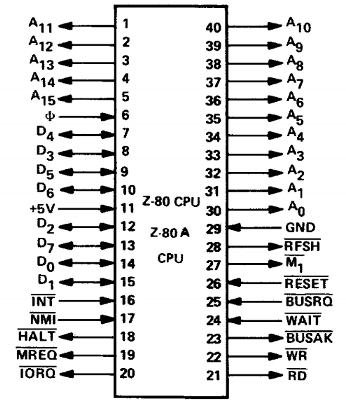This week, Zilog corporation announced that it would stop selling the Z-80 microprocessor. I haven’t written any Z-80 code since the 1980s, but I find myself nostalgic at the news. The Z-80, for those who aren’t microprocessor geeks, was a replacement for the Intel 8080, which was the first 8-bit microprocessor to find its way into a number of home computers running the CP/M operating system. The Z-80 could execute 8080 code unchanged, but also implemented a handful of instruction that brought some order to the madness that was the 8080 instruction set (and which, sadly, still taints the “x86” processors used in most modern computers). The Z-80 also greatly simplified power management (+5 volts only) and the memory access circuitry. 8080’s needed a handful of parts to implement even a very basic computer. With the Z-80, you pretty much just needed to add memory and I/O. I put Z-80’s into the networking equipment I designed for the Orange County Superior Court Justice Information System (one of the very first “local area networks”) and I put Z-80’s in the Color Dreams SuperCartridge for the original Nintendo Entertainment System (NES). The Z-80 in the SuperCart augmented the processor in the NES to allow it to display first-person POV games in an era when most home console gaming was limited to side-scrollers. I used it in several of the video display terminals I designed. (Not in the Space Shuttle launch terminals. I opted to spend big bucks and put a Motorola 6800 in those, and was glad I did.) It was elegant, simple, and (eventually) cheap.

You can still get Z-80s from other vendors, and there’s even an implementation on a field-programmable gate array, but the passing of the Z-80 is still notable.
—2p